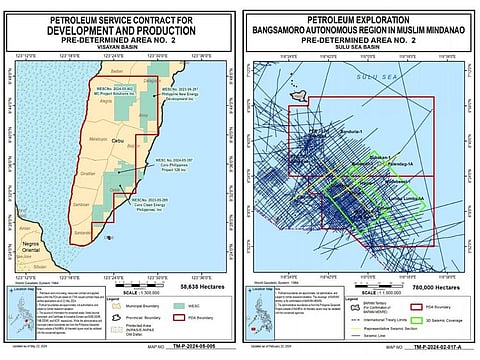Philippines: Record number of applications received for oil, gas, natural hydrogen exploration
DOE receives applications from both local, foreign companies

Manila: A record number of applications from local and foreign companies seeking to explore for oil, gas, and natural hydrogen resources in the country were received by the government, the Department of Energy (DOE) has announced recently.
This surge in interest from eight applicants marks the highest number of applications ever recorded for petroleum exploration in the Bangsamoro Autonomous Region in Muslim Mindanao (BARMM), covering three specific areas for oil and gas, and in Luzon, which covers a hydrogen exploration district.
Bids opened
The DOE and BARMM's Ministry of Environment, Natural Resources, and Energy (MENRE) recently opened the bid documents for the 1st BARMM Conventional Energy Bid Round, attracting applications for three predetermined areas (PDAs) in Cotabato Basin and Sulu Sea Basin.
In addition, the Philippine Bid Round, focusing on natural hydrogen exploration in Central Luzon, also received significant interest. Three applications were submitted for PDA-PH-1, and two for PDA-PH-2.
The government has not announced the names of entitied that qualified.
Disqualified: Alegria on-shore field application
While there was an application for the Alegria Field, it was unfortunately disqualified due to incomplete documentation.
The DOE is now evaluating these applications to determine if they will lead to service contracts. The department did not name the companies that submitted their applications.
Hydrocarbons
The Sulu Sea is characterised by sedimentary basins, which are ideal environments for the formation of oil and gas. These basins contain layers of sedimentary rocks, aticlines, faults, and salt domes seens as possible "traps" of hydrocarbons formed over millions of years.
The presence of source rocks, which are rich in organic matter that can generate oil and gas, is another favorable factor. Studies have indicated the potential for source rocks within the Sulu Sea basins.
Following the plebiscites that accepted the Bangsamoro Organic Law in February 2019, the new political entity Bangsamoro Autonomous Region in Muslim Mindanao (BARMM, home to some 4 million Filipinos), has made the exploration of these pre-determined areas possible.
Another area of interest is the Liguasan Marsh, which has long been a focal point for oil and gas exploration in the Philippines. While definitive proof of significant deposits requires extensive drilling and testing, several geological indicators suggest the potential for oil and gas presence in the area.
Natural hydrogen
Exploration for natural hydrogen on the main island of Luzon, is also a promising step towards clean energy. If found in significant quantities, it could be used for power generation with minimal emissions.
The pre-determined areas represent a potential opportunity for the Philippines to increase its energy security, boost its economy, and explore clean energy options.
Step forward
The announcement of qualified exploration applicants marks a significant step forward for the Philippines, which has seen a decline in exploration activities in recent years.
A substantial oil and gas find in the PDAs could help bolster the country’s effort to reduce dependence on imports.
The Philippines currently imports a significant portion of its oil and gas needs. Successful exploration in these areas could lead to domestic production, reducing dependence on foreign sources and potentially lowering energy costs.
It could also fuel economic growth and job creation while bolstering government revenue.
Successful discoveries would lead to royalties and taxes paid to the government, increasing revenue for infrastructure development and social programmes.
Sign up for the Daily Briefing
Get the latest news and updates straight to your inbox



